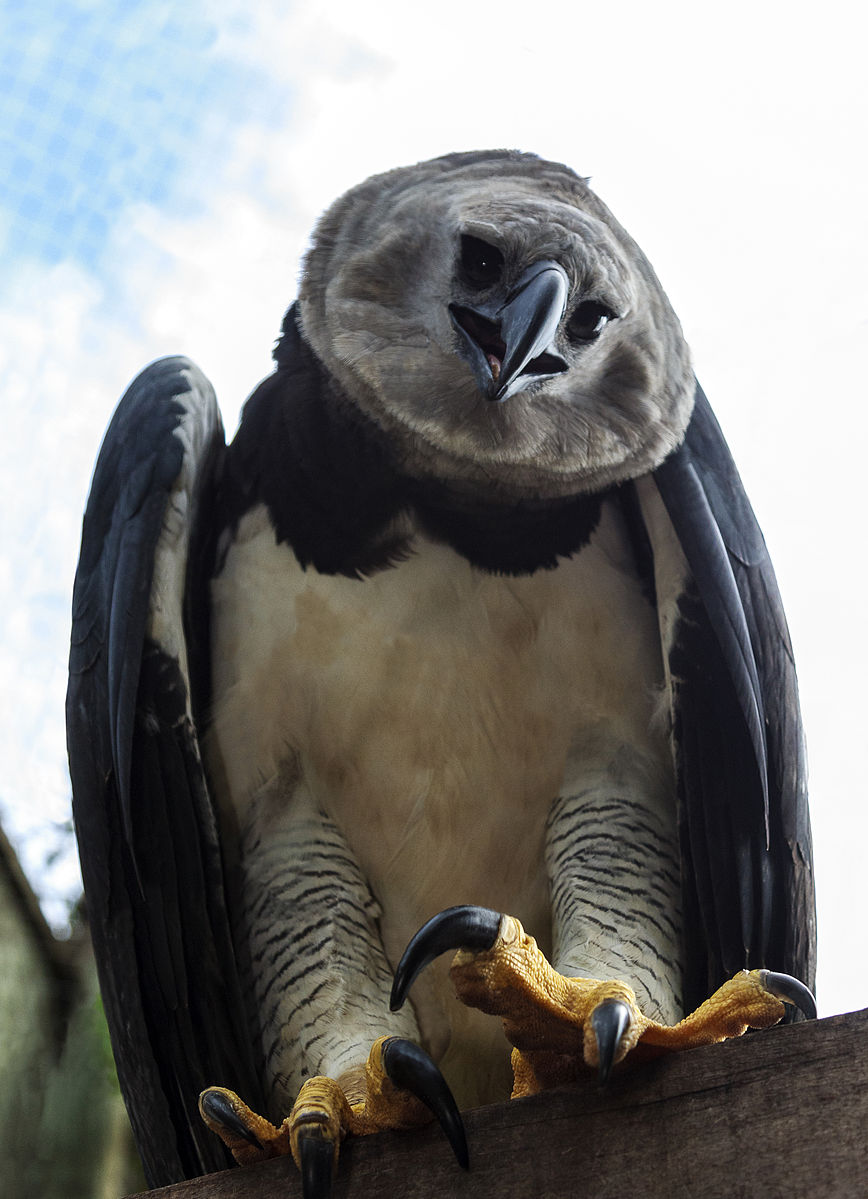No, Harpy Eagles are not native to Europe and are not found in the wild on the continent. These majestic birds of prey are native to the rainforests of Central and South America, primarily in countries like Mexico, Guatemala, Brazil, and Peru.
The Absence of Harpy Eagles in Europe
Harpy Eagles are not indigenous to Europe due to the significant differences in their natural habitat and environmental conditions. The tropical rainforests of the Americas provide the ideal ecosystem for these large, powerful eagles to thrive, with abundant prey, suitable nesting sites, and the right climatic conditions.
In contrast, the temperate and diverse landscapes of Europe, ranging from the Mediterranean to the Nordic regions, do not offer the same favorable conditions for Harpy Eagles to establish a natural population. The absence of their primary prey, such as sloths, monkeys, and other large arboreal mammals, further contributes to the lack of Harpy Eagles in Europe.
Harpy Eagles in Captivity in Europe
 Image source: Águia Harpia – Harpy Eagle by Jonathan Wilkins
Image source: Águia Harpia – Harpy Eagle by Jonathan Wilkins
While Harpy Eagles are not found in the wild in Europe, there have been instances of these birds being kept in captivity in various European countries. According to a study, there are currently around 10 Harpy Eagles in captivity in Europe, with the majority being housed in zoos in Germany, Spain, and the United Kingdom.
These captive Harpy Eagles are typically part of conservation and research efforts, as well as educational programs aimed at raising awareness about the species and its importance in the ecosystem. However, it’s important to note that these captive individuals are not a part of a self-sustaining population and are not contributing to the natural distribution of the species.
Conservation Efforts for Harpy Eagles
While Harpy Eagles are not found in Europe, there are ongoing conservation efforts to protect the species in its native range in Central and South America. The Harpy Eagle Conservation Programme, for example, is working to safeguard the species and its habitats in countries like Panama, Brazil, and Peru.
These conservation initiatives focus on various strategies, such as:
- Habitat protection and restoration: Ensuring the preservation of the tropical rainforests that are essential for Harpy Eagles to thrive.
- Monitoring and research: Studying the population dynamics, behavior, and threats faced by Harpy Eagles in their natural environments.
- Community engagement: Collaborating with local communities to raise awareness and promote the conservation of Harpy Eagles.
- Captive breeding and reintroduction: Establishing captive breeding programs to supplement wild populations and potentially reintroduce Harpy Eagles in suitable areas.
Unique Characteristics of Harpy Eagles
Harpy Eagles are known for their impressive size and power, making them one of the largest and most formidable eagles in the world. Some key characteristics of these magnificent birds include:
- Size and Wingspan: Harpy Eagles can have a wingspan of up to 2 meters (6.6 feet) and can weigh up to 9 kilograms (20 pounds), making them one of the heaviest eagles.
- Powerful Talons: Their sharp talons can measure up to 3-4 inches (7.6-10.2 cm) in length, allowing them to easily capture and carry away large prey.
- Distinctive Appearance: Harpy Eagles are easily recognizable by their distinctive crest of feathers on their heads, which they can raise and lower to communicate.
- Prey Preferences: These eagles primarily feed on arboreal mammals, such as sloths, monkeys, and tree-dwelling rodents, which are abundant in their native rainforest habitats.
Conclusion
In summary, Harpy Eagles are not native to Europe and are not found in the wild on the continent. These magnificent birds of prey are endemic to the tropical rainforests of Central and South America, where they play a crucial role in the ecosystem. While there are a few Harpy Eagles kept in captivity in European zoos, they are not part of a self-sustaining population and are primarily used for conservation and educational purposes. Ongoing efforts to protect Harpy Eagles and their habitats in their native range are crucial to ensuring the long-term survival of this iconic species.


